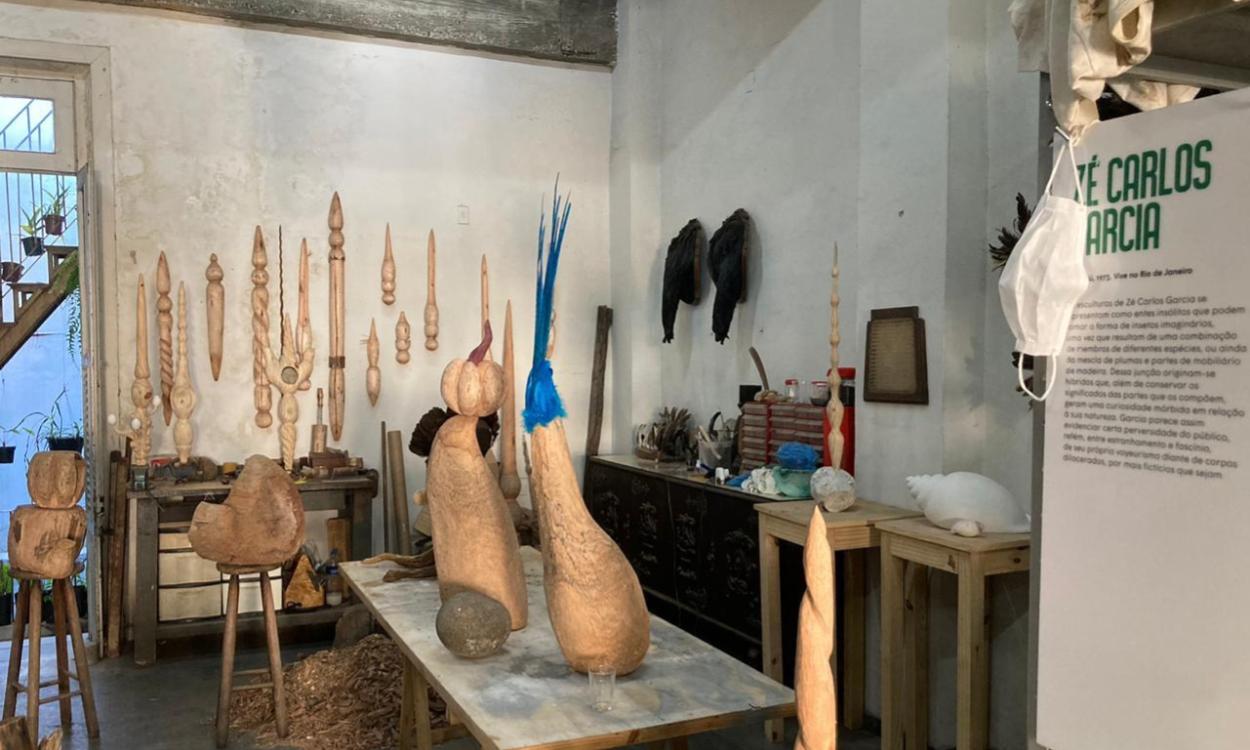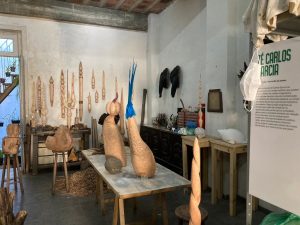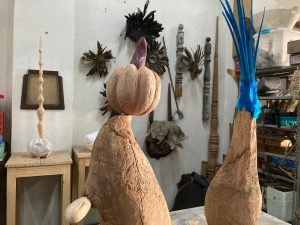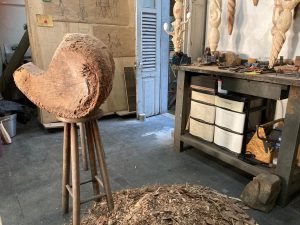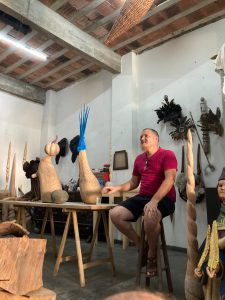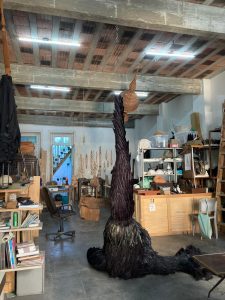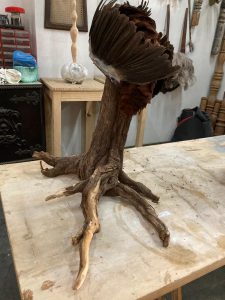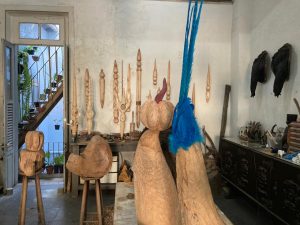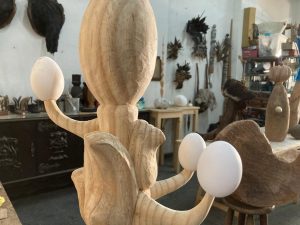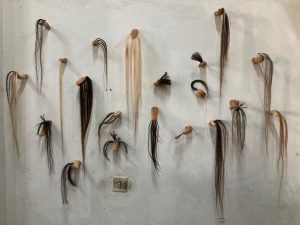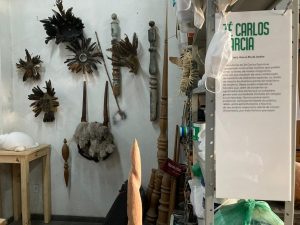Kicking off a series of visits to the studios of our represented artists, we have first met Zé Carlos Garcia at his space, located in Rio de Janeiro’s historic city center.
Surrounded by materials and artifacts that resemble a “cabinet of curiosities”, Garcia has been working on the development of a new series of sculptural objects for his first solo show at Portas Vilaseca Galeria, to be open in the second half of 2021.
The loneliness of these pandemic times obviously affected the work routine in the studio, which led the artist to take charge of all stages of production of his works. In this process of isolation and reflection, the introspective exercise of craftsmanship has prevailed, hence, the communion between mistakes and achievements becomes more natural and instinctive. When provoked by the fragile conditions of a world in suspension, on the verge of a breakdown, the artist points to a creative awakening that reveals new landscapes, for now gathered in the orbit of his work.
Shapes that seem to compose a Bosh-ish edenic garden circulate among neo-carrancas* brought from the memories of a childhood on the banks of the São Francisco River. Garcia’s allegorical hyper-realism also reveals particular poetics, through the juxtaposition of new found materials and references that run through popular traditions and the nature of the tropics.
* Commonly found on the lower Rio São Francisco in Brazil’s Northeast Region, a carranca is a type of figurehead attached to river craft which is attributed with power to protect the boatmen from the river’s evil spirits. The culture in Brazil incorporated elements of the indigenous culture, so that the idea of river spirits and forest spirits can help or hinder a crossing is also natural of the Amerindian imaginary.
Check in the gallery below some photos of this first visit.
——–
Photo gallery
——–
Bio
ZÉ CARLOS GARCIA (Aracaju, SE, 1973) studied Sculpture at the School of Fine Arts of the Federal University of Rio de Janeiro (UFRJ) and also attended several courses at Parque Lage’s Visual Arts School, also in Rio de Janeiro.
His artistic practice is centered on the investigation of the body – whether animal, human or sculptural – and on the experience as a voluntary action that alters the landscape, undergoing a constant morphological change, also through the addition of new elements. The symbolism of the speeches of power that illustrate the development of humanity is also present in his research. Garcia conceives his works from existing bodies, sometimes dead, static, found, natural or artificial, to generate objects – “beings” – under the sign of sculpture. Pieces and fragments of antique furniture with feathers, carnival feathers and horsehair are organized to create hybrids filled with aesthetic and allegorical power, as well as landmarks of conquest and territorial narratives serve to build an idea of eternity and the loss of power as a trace of ruin and ephemerality.
Garcia has been showing his works in several exhibitions across the country and abroad. Among his most recent solo shows, we highlight: Torto, curated by Paula Borghi, Cassia Bomeny Galeria, Rio de Janeiro, Brazil (2018) and Do pó ao pó, curated by Isabel Portella, Galeria do Lago, Museu da República, Rio de Janeiro, Brazil (2017). Among his participation in collective shows, we highlight: Busan Biennale (Busan, South Korea, 2018); Horse Takes King (Fondazione Prada, Milan, Italy, 2018 – in collaboration with Brazilian artist Laura Lima); A Room and a Half (Ujazdowski Castle Centre for Contemporary Art, Warsaw, Poland), among others. His works are part of important collections in Brazil, such as Marcos Amaro Foundation, located in Itu, Sao Paulo.
For more information, click here and check the artist’s profile page.
——–
The visit followed the social distancing and use of mask measures; the artist took off his mask only to be photographed.

